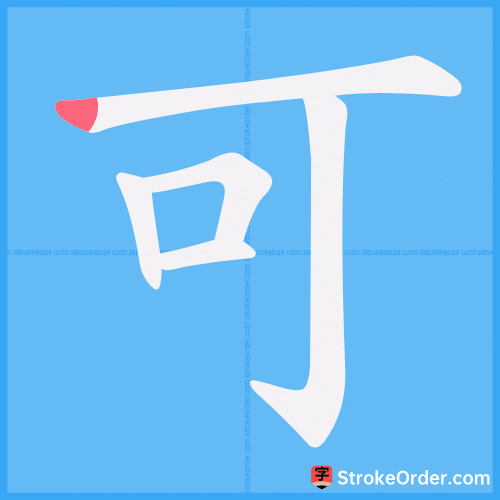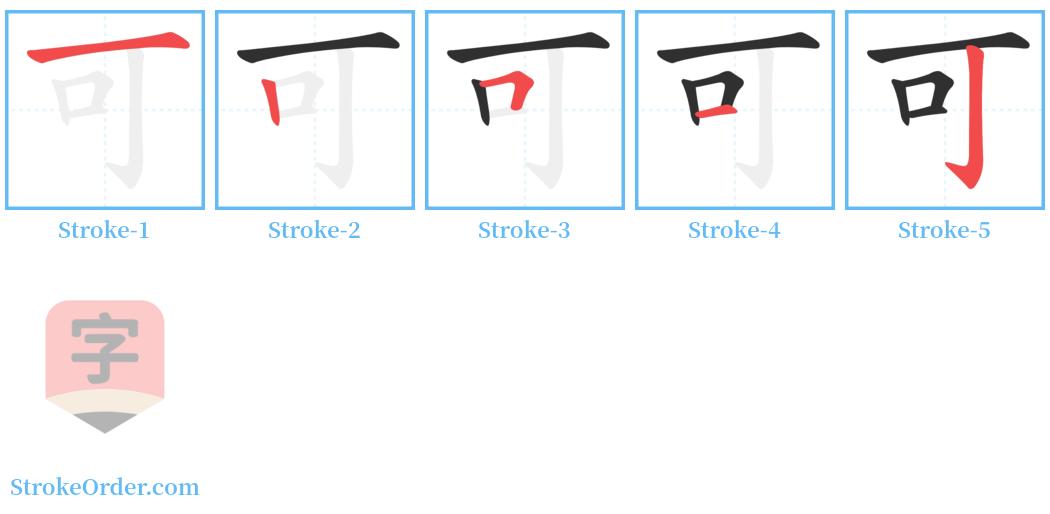可 Stroke Order
Animated Stroke Order of 可

Stroke Order Diagrams for 可

Step-by-Step Handwriting Guide for 可

Learn to Write Chinese Characters with Video Tutorials
Watch the video of writing the Chinese character "可", learn the correct stroke order (笔顺) of the character "可", and master the standard way of writing the character "可".
Free Printable Handwriting Practice with Stroke Order: 可
Printable Writing Practice Worksheet of "可" in Portrait Orientation (Tian Zi Ge)

Printable Writing Practice Worksheet of "可" in Landscape Orientation (Tian Zi Ge)

Information of 可
Pinyin
kě、 kè
Radical
口
Strokes
5 strokes
Usage
★★★★★
Definition
can / may / able to / certain(ly) / to suit / (particle used for emphasis)
可 [kě]
动词 [Verb]
1. 许可; 同意; 准许 (approve; permit; allow)
2. 能够; 可以 (can; may)
3. 值得,堪 (be worth doing; need doing)
4. 相称; 适合 (accord with)
5. 适合于… (如人意、人心) (make)
6. 应当,应该 (should)
7. 病痊愈 (recover from an illness)
形容词 [Adjective]
1. 善,好 (good)
2. 合意,认为正确,是; 对 (correct; right)
3. 适当 (appropriate; due; fit)
4. 满的 (full)
副词 [Adverb]
1. 可是; 却 (but)
2. 大约、近似 (about)
3. 就,便 (at once; right away)
4. 用在问句里,加强语气 (used to form an interrogative sentence)
5. 岂,难道 (as; used in written language, usually before a negative word to form a rhetorical question)
6. 表示程度 (used to express high degree)
7. 表示久望而获 (used to indicate that something has been long awaited)
8. 无义。语助词 (meaningless; a modal particle)
9. 表被动的助动词 (used as a passive auxiliary verb)
10. 另见 kè
特别用法:
可汗 (kè hán) - Title for rulers from ancient Chinese tribes like Xianbei, Turkic, Huabei, and Mongol.
可 [kè]
另见 kě
awful / dreadful / fearful / formidable / frightful / scary / hideous / horrible / terrible / terribly
There is no denying it. / It cannot be denied that ... / It is not to be denied that... / There is no denying.
Input Method for 可
Pinyin
ke3
Wubi
skd
Cangjie
mnr
Zhengma
aij
Four Corner
10620
Unicode
U+53ef
Same Pronunciation Characters